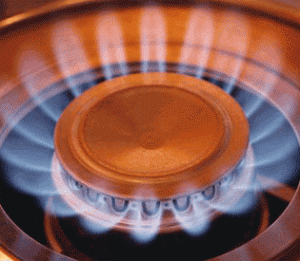 Natural gas surged on Friday and headed for the first week of advances since January 24, as the chilly US weather spurred demand for the energy source and eroded stockpiles by the largest February amount since 2007.
Natural gas surged on Friday and headed for the first week of advances since January 24, as the chilly US weather spurred demand for the energy source and eroded stockpiles by the largest February amount since 2007.
On the New York Mercantile Exchange (NYMEX), natural gas for delivery in March soared by 1.95% to trade at $5.324 per million British thermal units by 09:34 GMT. Prices hit a session high at $5.362 per mBtu, while day’s low was touched at $5.228 per mBtu. The energy source advanced 8.4% yesterday and headed for a 11.5% weekly gain, the first weekly gain since the period ended January 24.
Prices have soared 25% so far in 2014, after the energy source settled last year 26% higher, the best performance since 2005 and second straight annual advance.
CME Group Inc. announced last week, that effective from February 6th, the initial margin for next-month natural gas futures, traded on NYMEX, will increase almost 10% to $ 5 500 for speculators from $5 005. This will be the highest margin requirement in more than 4 years, and will be almost double the initial margin at the beginning of this year, which was $2 530.
According to Standard & Poor’s GSCI gauge of 24 commodities, gas futures are the most volatile commodity this year as volatility more than doubled from 31.64% last year to 80.2% in 2014.
EIAs weekly US gas storage report
The Energy Information Administration said yesterday in its weekly storage report that US natural gas inventories fell by 237 billion cubic feet in the seven days through February 7th, above the median forecast of 232 billion cubic feet, by 10 analysts in a Bloomberg survey. The decline also outstripped the five-year average drop of 162 bcf during the comparable week. EIA data showed that this was the largest February decline since 2007.
Total gas held in US underground storage hubs fell to 1.686 trillion cubic feet, the weakest level for this time of the year since 2004. US gas stockpiles were 33.9% below last year’s amount of 2.549 trillion cubic feet during the comparable week, which is also an all-time high. The deficit to the five-year average widened to a record 27.2%, up from 22.4% a week earlier.
Inventories at the East Region received a net withdrawal of 106 bcf and fell to 814 bcf, 27.9% below the five-year average of 1.129 trillion cubic feet. Stockpiles in the West Region fell by 42 bcf to 259 bcf and were 24.5% beneath the average. Inventories at the Producing Region slid by 89 bcf. At 613 bcf, they were 27.5% below the five-year average amount of 845 billion cubic feet.
“This latest string easily totals the largest cumulative three-week draw dating back to when the EIA began tracking the data in 1994,” said yesterday Mike Tran, an analyst at CIBC World Markets in New York, cited by Bloomberg.
Short-term weather outlook
NatGasWeather.com reported on February 14th that snowfall will gradually weaken across New England as the recent Northeastern storm tracks out over the Atlantic. Another weather system will develop over the Northeast on Saturday, bringing a fresh blanket of snowfall.
Moreover, the latter will usher into another cold blast and will lower temperatures to much colder than normal over the highest-consumption states, and according to the website will keep strong natural gas and heating demand.
Yet another winter storm will track across the Midwest and Northeast, leaving few inches of snow, before the forthcoming warm-up for the northern US late next week, which, however, wont last long.
Extended forecast
NatGasWeather.com’s extended forecast for the period ended February 27th called for a big warm-up to take place over the highest-consumption states of the northern US, with temperatures near or above normal.
However, a major winter storm will put an end to the brief warm-up around February 23rd, as a fresh dose of cold Canadian air sweeps across the Midwest and Northeast, bringing heavy snow. The latter will lower temperatures to well below-normal for the last few days of the observed period. According to the website, this will provide a return to strong natural gas and heating demand at the end of February.




